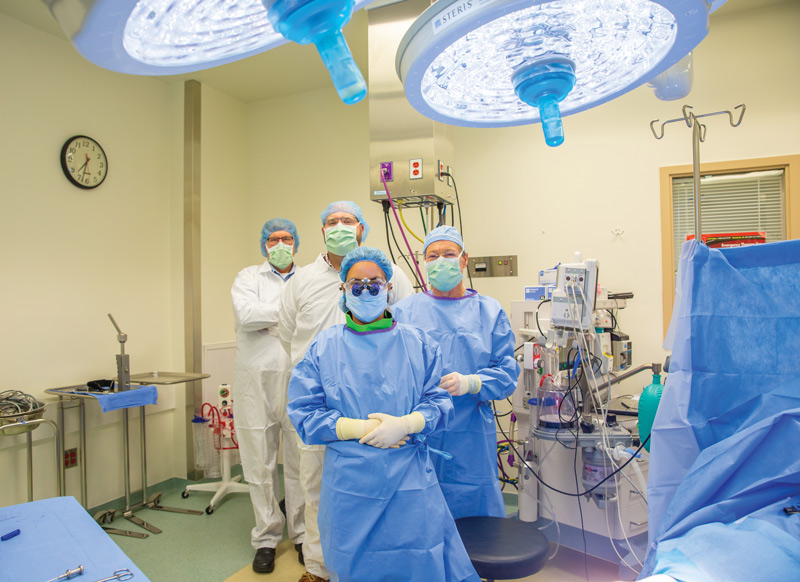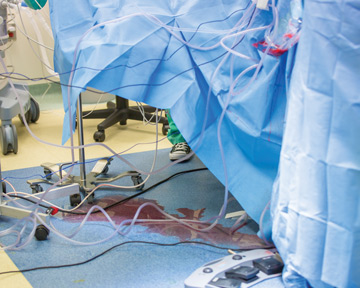The Surgeons at Advanced Surgical Center never paid much attention to their own well-being while operating. Darleneya Robinson, RN, nursing director of surgical and anesthesia services at the facility in Duncanville, Texas, used to cringe when she watched her orthopedic surgeons standing in the same spot for hours on end with fluid runoff pooling at their feet. Ms. Robinson knew she had to put as much value on keeping her OR staff safe and comfortable as she did on patient safety.
Ms. Robinson’s first team-pleasing step involved purchasing a cart-based fluid waste management system. The mobile unit is rolled into ORs, and its large internal canisters have the capacity to collect the runoff of several fluid-heavy ortho cases before it needs to be emptied. When filled, a surgical tech or a nurse rolls the unit to a docking station, which automatically empties the contents into the sewer system. The setup eliminates the need for staff to lug heavy fluid-waste-filled canisters to a utility sink and takes away the risk of exposure to splash-back while they pour the contents down the drain.
Ms. Robinson then purchased disposable suction and anti-fatigue mats. The mats, which cost about $400 for a package of 10, attach to the ports of the fluid-collection cart. The 56-by-40-inch, air-cushioned floor coverings provide a padded place for surgeons to stand. Ms. Robinson says they’re worth the cost.
“They eliminate the need to put towels on the floor to sop up fluid and they add to surgeon comfort,” she explains.
Getting a handle on unwieldy cords is also an important component of a safe surgical floor. Teresa Boynton, MS, OTR, CSPHP, a consultant with Mobility Consulting and Presentations in Denver, Colo., says she’s seen surgical team members suffer serious injuries from tripping over cords, including an employee who lost the use of an arm from a fall in an endoscopy suite. “It’s critical for cords to be bundled and positioned so they’re kept safely out of high-traffic walkways,” says Ms. Boynton.
Wireless technology can also help with cord clutter. So can housing surgical equipment on floor- or ceiling-mounted booms. If that’s not possible, there are a variety of bright-colored cord covers that adhere to the floor. Additionally, clasps and positioning guards keep cords that need to be run across floors as close together as possible.
.svg?sfvrsn=be606e78_3)


.svg?sfvrsn=56b2f850_5)